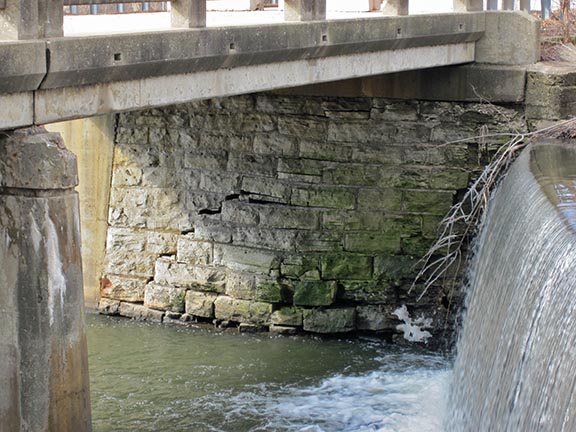Somebody other than me should go to these Fox River dam removal meetings. Or if you know groups or people interested, pass this info on to them.
I did all this 20-25 years ago and here we are, still talking about the same dam removal issues and nothing ever got accomplished. Which is why I’m done with it all. I made a number of good contacts years ago that would feed me with huge volumes of info that I could use at the meetings I went to back then. I had a big filing cabinet filled to overflowing with not only all things dam removal, but also all things dams in the Fox River Valley Watershed. I recycled all that info years ago.
I also made quite a few enemies at these meetings with people that refused to see the usefulness in dam removals.
I won’t do this again. It’s time for others to step up to get this done. Hopefully somebody will document the dam removals as they happened. In the tabs at the top of the page you’ll see one called Blackberry Creek Dam Removal. This was an eight foot tall dam near the mouth of Blackberry Creek that had been in place for 175 years. I documented the whole process as it took place. Would be nice if somebody did this for any of the dams that get removed.
September Meetings of Importance
The Army Corps has released their Fox River Connectivity & Habitat Study. It is open for public comment from now until November 6, 2023. The Corps will hold three public meetings next week. Each meeting will run from 5:30 to 7:30 pm. The Corps will report on their study’s findings, the IDNR will provide remarks and the Fox River Study Group will report on our 2022 Fox River Implementation Plan’s findings related to the most cost-effective means of improving water quality in the Fox River.
• Mon. Sept. 18 in St. Charles at the Kane County Branch Court, 530 S Randall Rd, St. Charles
• Tues. Sept. 19 in Elgin at the Heritage Ballroom, Centre of Elgin, 100 Symphony Way, Elgin
• Wed. Sept. 20 in Aurora at the Waubonsee Community College downtown campus, 18 S River St, Aurora
The draft report is available online at the Corps website at the following link:
https://www.lrc.usace.army.mil/…/Public-Review-Documents/.
See the attached Notice of Availability – Fox River Connectivity & Habitat Study Draft Project Implementation Report and Integrated Environmental Assessment.
The Fox River Study Group board encourages everyone to come out to hear the presentations and provide public comment.
Comments and/or questions can also be sent to Mr. Ryan Johnson, Biologist, at Fox-River-Study@usace.army.mil.
Ryan Johnson, Biologist
US Army Corps of Engineers, Chicago District
231 S LaSalle St. Suite 1500
Chicago, IL 60604
312-846-5559 (office)
312-718-2856 (cell)
The Corps’ plan recommends the removal of dams in Carpentersville, Elgin, South Elgin, St. Charles, Geneva, Batavia, North Aurora, Aurora, and Montgomery.
Human activity in the Fox River Valley over the past two centuries has led to steady habitat loss and degradation, fragmentation, sedimentation, the influx of algae and invasive species, and the loss of native plants and animals. However, there is overwhelming scientific research supporting a solution for reversing the Fox River’s habitat loss, pollution, and the dominance of invasive species. Removing dams along the Fox River restores it to its natural, free-flowing state and reverses centuries of environmental decline.
Removing dams along the Fox River:
• Restores a free-flowing current, reducing sediment load and algae blooms while improving water quality;
• Connects the river, supporting mussel, fish, and amphibian habitats;
• Supports the restoration of habitat for native plants, birds, and small mammals along the riverbanks;
• Enhances the Fox River’s ability to absorb and filter urban and agricultural runoff;
• Provides increased opportunities for fishing, kayaking, canoeing, and the use of small boats;
• Removes the danger of drowning at dams;
• Allows the Fox River to naturally solve many of the water quality problems we face without creating huge increases in utility bills. Without dam removals, the Fox Valley community would need an estimated $150 million in new wastewater treatment infrastructure, 10x the cost of dam removal.
• Eliminates the annual operations and maintenance costs of dams.
